Case 6: 18291829 was a boom year for the annuals. The introduction of The Keepsake the previous year raised both the visual and literary standards of the genre. In order to compete in a growing but tough market, those producing annuals saw the need to enhance the visual and literary appeal of their volumes. The roster of authors who contributed to annuals in 1829 reads like a laundry list of the most important writers of the Romantic period, among them: Percy Bysshe Shelley, John Keats, Charles Lamb, Walter Scott, William Wordsworth, L.E.L., S.T. Coleridge, Felicia Hemans, Mary Shelley, Robert Southey, and John Clare. Displayed here is a selection of over twenty-five annuals produced in the fall of 1828 for the upcoming Christmas gift-giving season. The tension between offering purchasers novelty while still meeting their established expectations can be seen by comparing the annuals for 1829. All the annuals share the common features of including well-known authors and impressive illustrations, yet what is important to notice is the way the editors sought to distinguish their volumes from their competitors. In advertisements and prefaces editors claim that their volumes include exclusive literary and engraving talent not found in the pages of other annuals.
Item No. 25: The Keepsake The preface to the 1829 Keepsake claims that "the enormous sum of eleven thousand guineas has been expended" to produce the volume. Much of this money went to paying famous authors—often those previously disinclined to be associated with the annuals—vast sums of money for contributions. Wordsworth was paid 100 guineas for the five poems he contributed, including "The Country Girl." The poem was inspired by the Charles Heath's engraving. Wordsworth, in a letter from March 1828, asserts that he has "written one little piece, 34 lines, on the Picture of a beautiful Peasant Girl bearing a Sheaf of Corn." |
|
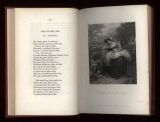 [click image to enlarge] |
|
|
Item No. 26: The Gem The Keepsake for 1829 is often considered the most impressive volume in annual history; however, The Gem of the same year boasted a similarly impressive selection of authors. Among them were John Keats, Charles Lamb, and Walter Scott. Scott, who also held a prominent place in the 1829 Literary Souvenir, contributed the poem "The Death of Keeldar", pictured here with its corresponding engraving. | |
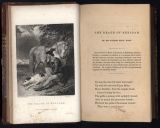 [click image to enlarge] |
|
Item No. 27: The Literary Souvenir In the Advertisement to the 1829 Literary Souvenir, Alaric Watts explains that in order "to meet the extraordinary competition that has lately arisen among the publishers of annual works" he has made significant changes to his own volume, including enlarging the pages "to admit the introduction of engravings of a more important size than heretofore." Displayed here is an engraving of Sir Walter Scott, which Watt's claims "cannot fail of proving of the highest interest to the public" as it is considered by his family and friends "to be by far the best likeness of him that has yet appeared." |
|
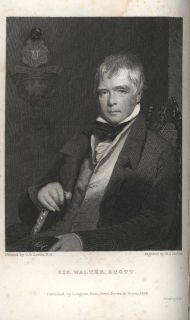 [click image to enlarge] |
|
Item No. 28: The Amulet; or Christian Literary Remembrancer In addition to works by authors like L.E.L., Robert Southey, and S.T. Coleridge, the fourth edition of The Amulet emphasized its religious aspects to win pious purchasers. In the volume's preface, its editor S.C. Hall proudly quotes from a review of The Amulet that praises its appropriateness in any "room where friends meet in health and cheerfulness." The work’s Christian emphasis can be seen in the first poem of the volume, "The Angels' Call," by Felicia Hemans and the corresponding engraving, "Guardian Angels." |
|
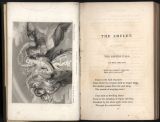 [click image to enlarge] |
|
Item No. 29: Forget Me Not The Forget Me Not for 1829 appeared in its recognizable green binding. Of the material included within, the editor Frederic Shoberl explains in his preface: "A glance, indeed, at its contents—comprising more than ONE HUNDRED poems and prose contributions, the authors of many of which rank among the most eminent of our living writers, and FOURTEEN line engravings, finished with the utmost care by the first artists, can scarcely fail to produce an impression of its superiority." Among the eminent writers listed on the first page of the table of contents are Felicia Hemans, John Clare, and James Hogg. |
|
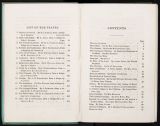 [click image to enlarge] |
|
| < Previous | Next > |
